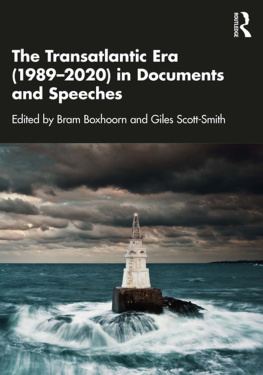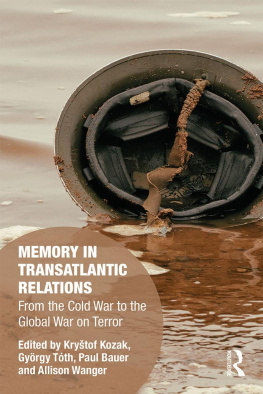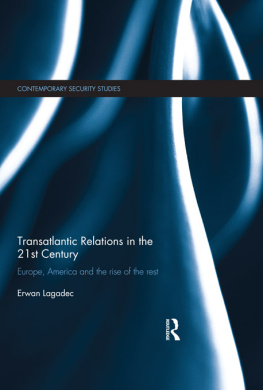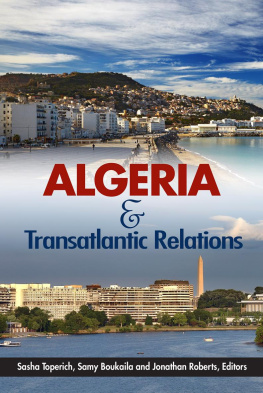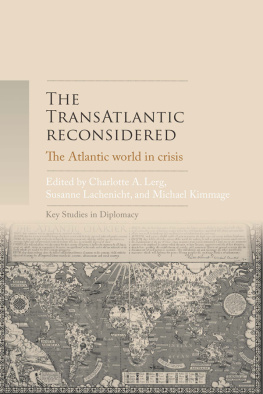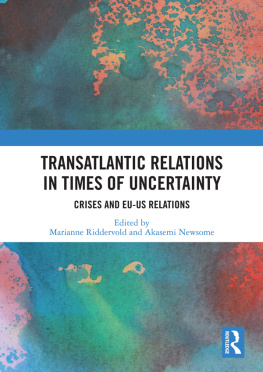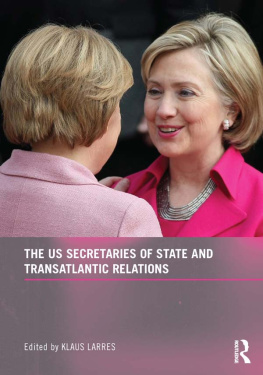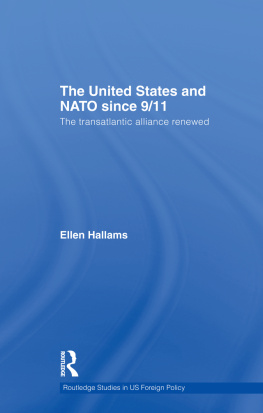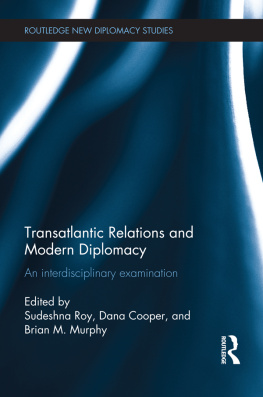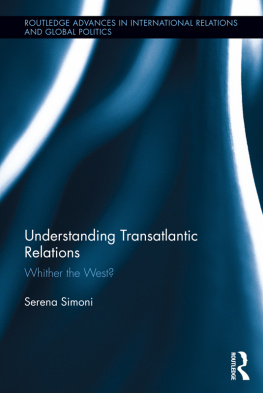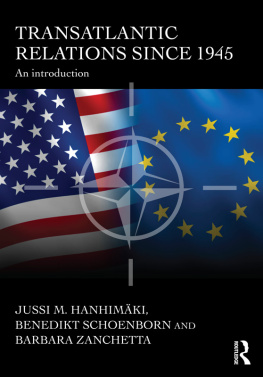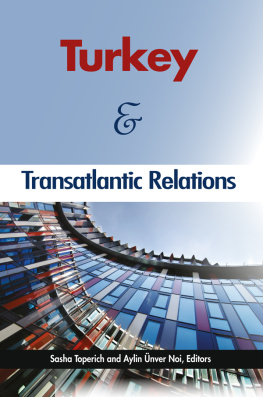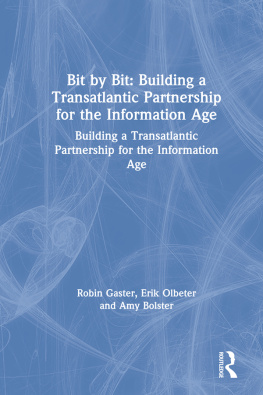The Transatlantic Era (19892020) in Documents and Speeches
This accessible textbook uses key documents embedded in a clear narrative to chart the post-Cold War rise and decline of transatlantic relations. It provides a novel interpretive framework by proposing that the three decades between 1989 and 2020 represent a distinct transatlantic era.
Providing a unique new look at the recent history and politics of transatlantic relations, the book argues that three key phases can be identified:
- 19891999: victory?
- 20002010: divergence?
- 20112020: disarray?
Each period defines a particular set of political, economic, and security dynamics, with the trend being a gradual undermining of the strengths on which transatlantic unity once relied. These three decades therefore represent both the high point of the transatlantic regions power and potential, and its gradual decline in a global context. Presenting students with a critical perspective of US and European transatlantic policies through annotated key documents covering central aspects of security, political, economic, and cultural affairs, it will be essential reading on all International Relations courses as well as of great interest to scholars and students of US and European Studies, Foreign Policy, and Security Studies.
Bram Boxhoorn is director of the Netherlands Atlantic Association (The Hague), a non-partisan organization that focuses on transatlantic security issues, such as the role of NATO in the EuroAtlantic security framework, EUUS relations, and NATORussian relations.
Giles Scott-Smith holds the Roosevelt Chair in New Diplomatic History at Leiden University, the Netherlands.
A fascinating look at three decades worth of transatlantic security cooperation. Boxhoorn and Scott-Smith offer insights and thought provoking questions for everyone interested in the changing political fortunes of the West and the prospect of a global power shift.
Sten Rynning,University of Southern Denmark
First published 2022
by Routledge
2 Park Square, Milton Park, Abingdon, Oxon OX14 4RN
and by Routledge
605 Third Avenue, New York, NY 10158
Routledge is an imprint of the Taylor & Francis Group, an informa business
2022 Bram Boxhoorn and Giles Scott-Smith
The right of Bram Boxhoorn and Giles Scott-Smith to be identified as authors of this work has been asserted by them in accordance with sections 77 and 78 of the Copyright, Designs and Patents Act 1988.
All rights reserved. No part of this book may be reprinted or reproduced or utilised in any form or by any electronic, mechanical, or other means, now known or hereafter invented, including photocopying and recording, or in any information storage or retrieval system, without permission in writing from the publishers.
Trademark notice: Product or corporate names may be trademarks or registered trademarks, and are used only for identification and explanation without intent to infringe.
British Library Cataloguing-in-Publication Data
A catalogue record for this book is available from the British Library
Library of Congress Cataloging-in-Publication Data
Names: Boxhoorn, Bram, author. | Scott-Smith, Giles, 1968 author.
Title: The transatlantic era (19892020) in documents and speeches / Bram Boxhoorn and Giles Scott-Smith.
Description: First Edition. | New York: Routledge, 2022. | Includes bibliographical references and index.
Identifiers: LCCN 2021021586 (print) | LCCN 2021021587 (ebook) | ISBN 9780367747855 (Hardback) | ISBN 9780367747862 (Paperback) | ISBN 9781003159551 (eBook)
Subjects: LCSH: United StatesForeign relations1989 | EuropeForeign relations1989 | United StatesForeign relationsEuropeTextbooks. | EuropeForeign relationsUnited StatesTextbooks. | World politics1989
Classification: LCC JZ1480 .B645 2022 (print) | LCC JZ1480 (ebook) | DDC 327.4073dc23
LC record available at https://lccn.loc.gov/2021021586
LC ebook record available at https://lccn.loc.gov/2021021587
ISBN: 978-0-367-74785-5 (hbk)
ISBN: 978-0-367-74786-2 (pbk)
ISBN: 978-1-003-15955-1 (ebk)
DOI: 10.4324/9781003159551
Typeset in Times New Roman
by codeMantra
Authors
Bram Boxhoorn is director of the Netherlands Atlantic Association (The Hague), a non-partisan organisation that focuses on transatlantic security issues, such as the role of NATO in the EuroAtlantic security framework, EUUS relations, and NATORussian relations. Before that he was assistant professor at the University of Amsterdam where he read European history and international relations. He received his Ph.D. in history at the University of Amsterdam in 1992. From 1988 until today he is associated as a lecturer on international relations at Webster University (Leiden). He is a regular commentator in Dutch media on issues concerning NATO, US foreign policy, and European history and politics.
Giles Scott-Smith holds the Roosevelt Chair in New Diplomatic History at Leiden University, and is also attached to the Roosevelt Institute for American Studies in Middelburg, the Netherlands. From 2013 to 2016, he was Chair of the Transatlantic Studies Association. In 2018, as one of the organisers of the New Diplomatic History network (http://www.newdiplomatichistory.com), he was a founding editor of Diplomatica: A Journal of Diplomacy and Society (Brill). He is also co-editor for the Key Studies in Diplomacy series with Manchester University Press.
Acknowledgements
The editors would like to thank Kate Delaney for the translation of Hans van Mierlo, The Vitality of the Nation-State and Europe in the 21st Century (Part II Document 10). The editors would also like to thank Dario Fazzi for his contribution to this project.
Introduction The transatlantic era
DOI: 10.4324/9781003159551-1
This collection of documents charts the development of transatlantic relations in the post-Cold War era. It puts forward an interpretive framework for this period, by proposing that the three decades between 1989 and 2020 represented the rise and decline of what we call the transatlantic era. In the early 1990s there existed a moment of possibility for the North American and European allies to shape international politics according to their shared values and interests, centred on democracy and the free market. Their principal rival, the Soviet Union, was no longer present as a challenger state. The Peoples Republic of China was not yet a great power, and was temporarily isolated following the violent suppression of the Tiananmen Square pro-democracy protests in 1989. The end of the Cold War appeared to present an opportunity for establishing a world order based on international law, democratic principles, free-market capitalism, and Western leadership, grounded on the fundamental relationship between North America and Europe. It was, in many ways, a repeat of the 1945 moment when the United States possessed unparalleled power and influence, only this time with greater European involvement. The era of transatlantic dominance in global governance seemed at hand.
Fast forward 30 years and this post-Cold War opportunity seems a distant dream. Under the combined pressures of the presidency of President Trump,
The argument put forward by this volume is that this does not simply represent a temporary decline that can be easily reversed by new leadership. The transatlantic era instead represents an argument that the 30-year period after 1989 was a unique moment of potential for securing and extending systems of global governance on Western principles and on a global scale, but that this period has instead seen the gradual unravelling of the transatlantic relationship along lines of fundamental political, economic, and cultural divergence. These forces of divergence have involved as much internal dynamics (changing political patterns, economic and financial stresses, and cultural identities) as they have external pressures (new threats, rising powers). Transatlantic relations will of course continue to be vital in global governance, but the transatlantic era a definable era when those nations had the potential to define the contours of that global governance in their own image is now under stress. Certainly, transatlantic political, economic, and cultural forces will still seize the initiative at particular times, as was seen with the way the cause of the Black Lives Matter (BLM) movement crossed the Atlantic in force in 2020. And improved coordination in crucial policy fields such as combating climate change could still position the transatlantic at the centre of global developments. Nevertheless, we are already in a transition towards a new multipolar era of global governance, the contours of which are still unclear.

